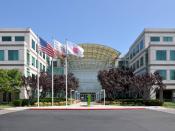The increase in merger activity has presented an interesting challenge to business practitioners, corporate analysts and academics alike.The past two decades however has witnessed a re-emergence of this trend, with a proliferation of mergers and acquisitions taking place across virtually all sectors of industry, as well as national boundaries. This recurrence has clearly been the result of many motivations and is an indication of the logical responses of firms to changes in their competitive environments.
The merger and acquisition phenomenon has been evident throughout much of the last century, with periods of heightened activity in the 1920's, the 1960's to the early 1970's, for most of the 1980's, and again with increasing frequency throughout the 1990's through to the present day. Many of the mergers that did occur were 'horizontal' in nature, with the exception of the 1920's, which saw a flurry of 'vertical' integration, while in the 1960's, the 'conglomerate' merger was the dominant form.
Since then, much of the merger activity that has taken place has come to be described as 'strategic' in nature by both academics in the field of management as well as industry commentators. This classification has therefore come to reflect the principle motive behind many of these mergers: the growing desire by firms to establish a larger and more dominant power base in what is an increasingly competitive and multinational world.
Also embraced within the strategic management theory framework of particular interest is the concept of resource dependency and core competencies. When firms face a depletion of resources and competencies that are readily unavailable, they are more likely to enter into a merger or acquisition agreement in order to fulfil these requirements.
An important consideration arises in relation to the competitive advantage of the firm and its core capabilities. Mergers and acquisitions are...


